
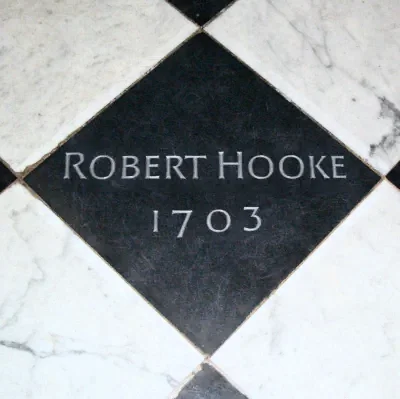
The study or science of an art or of arts in general, especially the mechanical or industrial arts.
Common sense is science exactly in so far as it fulfils the ideal of common sense; that is, sees facts as they are, or, at any rate, without the distortion of prejudice, and reasons from them in accordance with the dictates of sound judgement. And science is simply common sense at its best; that is, rigidly accurate in observation, and merciless to fallacy in logic. ― T. H. Huxley, 1896. 1 The Crayfish: An Introduction to the Study of Zoology, Thomas Henry Huxley. At Gutenberg
My formal introduction to science at school lived up to Huxley's advertisement. It was an academically ambitious environment, and the sciences, particularly the physical sciences, presented the most rigorous and demanding courses. A particular characteristic of science courses is the identification of key conceptual elements by the name of the scientist who devised each one. These select figures are held in great respect, in one case to the point of being publicly idolised:
Nature and Nature's laws lay hid in night: God said, Let Newton be! and all was light. ― Alexander Pope
This is not just poetic license, it is a sentiment widely shared by educated scientists.
The back cover of Isaac Newton, the Last Sorcerer by Michael White promised that “After White's Newton, National Curriculum Newton will never be the same”, when it appeared in paperback in 1998. Would the shadow of superstition be cast on this great genius and alter the respect in which he is held? The answer was no: White's Newton is not only a great genius, but also taps into alchemy as a source of inspiration.
There is a chapter on "Feuds", in which Newton's work on light, and his disagreements about it with Robert Hooke, are introduced. A footnote on page 185 gives background:
Newton believed that light is made up of invisible particles; Hooke supported the view that it is composed of waves. This argument is still not completely resolved, but modern science suggests that light has a dual nature: that it is both wavelike and corpuscular, depending upon the experimental circumstances.
Now I was taught at school that although Newton rejected the wave theory of light, on the basis that light travels in straight lines whereas waves spread out, this was not bad science because the evidence of the wave nature of light was not available to him at the time. But here White is trying to validate Newton's viewpoint because it turned out to be right in the end: surely, the important thing is that the the available evidence has been properly examined and used.
My gratification that my education had provided a critical insight like this evaporated when I realised that further on in the curriculum we performed a classic experiment which demonstrates the wave nature of light, and the experiment was called Newton's Rings. The contradiction was never pointed out, and I had not noticed it. It revealed a fallacy in logic which in this case did not live up to Huxley's advertisement.
A more significant issue comes to light on page 198 where White quotes a passage from An Attempt to Prove the Motion of the Earth from Observation in Hooke's Cutlerian Lectures, 1674.
I shall explain a system of the world, differing in many particulars from any yet known, answering in all things to the common rules of mechanical motions. This depends upon 3 suppositions; first, that all celestial bodies have an attractive of gravitating power towards their own centres, whereby they attract not only their own parts, and keep them from flying from them, as we observe the Earth to do, but that they do also attract all the other celestial bodies that are within the sphere of their activity, and consequently that not only the Sun and the Moon have a influence upon the body and motion of the Earth, and the Earth upon them, but that Mercury also, Venus, Mars, Saturn and Jupiter, by their attractive powers have a considerable influence upon its motion, as, in the same manner, the corresponding attractive power of the Earth has a considerable influence upon every one of their motions also. The second supposition is this, that all bodies, that are put into direct and simple motion will continue to move forwards in a straight line, until they are by some other effectual powers deflected and bent into a motion describing a circle, ellipsis, or some other uncompounded curve line. The third supposition is, that these attractive powers are ‘so much the more powerful in operating, by how much nearer the body wrought upon is to their own centres
Anyone who has learned Newton's laws of motion will recognise the first of them in the above passage by Hooke. Further, Hooke's System of the World sets out the basis of the celestial mechanics for which Newton has been given credit. The commentary in Michael White's book on this passage dismisses Hooke's efforts as guesses, and contrasts them with Newton's empirical science and revolutionary description of universal gravitation, in a way that seems very much distorted by prejudice against Hooke. With this kind of protection, National Curriculum Newton will always be the same.
This was my introduction to the lasting disagreement about who really shone the light on Nature's laws. It did not take long to find that a concern like my own about the misinformation of generations of students had been much more eloquently expressed by Robert Weinstock, in Problem in two unknowns: Robert Hooke and a worm in Newton’s apple published in The Physics Teacher, 1992. Weinstock summarises the affair by saying that Newton's greatest achievement was in public relations.
This peculiar affair of bias and mistaken credit showed that I shared the general lack of awareness of Hooke's life and work. This was improved by reading the biography of Robert Hooke by Margaret 'Espinasse (Heinemann, 1956). 'Espinasse introduces his Micrographia and Cutlerian Lectures, but defers to Bronowski's assessment of Hooke as being yesterday's man as far as his work science and mechanics is concerned. It appears that Bronowski was unaware of Hooke's System of the World 2 The Common Sense Of Science, Penguin, 1960, Jacob Bronowski, Chapter 3 Isaac Newton's model, esp.p34-5
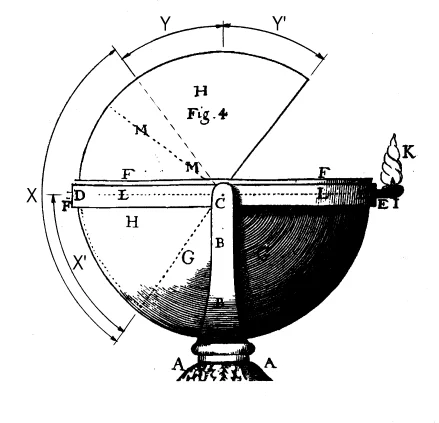
At the time I was getting informed about these things, there was a call for papers for the conference to mark the tercentenary of the death of Robert Hooke in 2003 at The Royal Society of London. The issues of gravity and celestial mechanics were receiving expert attention from specialists, so it was unlikely I could contribute much on that topic at this stage. My reading had shown that there had been assessments of Hooke's other work which dismissed it as riddled with elementary errors. It was evident that the authors of these assessments had rushed to condemn on the basis of only an elementary understanding of the subjects that Hooke studied. I contributed a paper Assessment of the Scientific Value of Hooke’s Work to the London conference, and subsequently adapted it to form Chapter 6 of the conference book 3 Robert Hooke - Tercentennial Studies (Aldershot: Ashgate, 2006) . The assessment is also presented here.
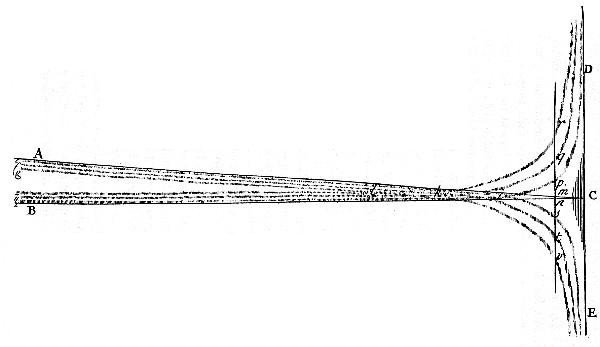
One item that turned up in the research was from Newton's Opticks: toward the end of the volume there is an investigation into the way that light bends around obstacles, which concludes (page 339)
When I made the foregoing Observations, I design'd to repeat most of them with more care and exactness, and to make some new ones for determining the manner how the Rays of Light are bent in their passage by Bodies, for making the Fringes of Colours with the dark lines between them. But I was then interrupted, and cannot now think of taking these things into farther Consideration. And since I have not finish'd this part of my Design, I shall conclude with proposing only some Queries, in order to a farther search to be made by others.
These are just the phenomena that confirm the wave nature of light; Newton had the decisive evidence, but did not engage with it.
Since the 2003 conference there have been several biographies of Hooke, and a flood of academic studies on him. Hooke is no longer the person whose main claim to fame is that he had disputes with the eminent Isaac Newton. The popular biographies by Stephen Inwood and Lisa Jardine have thoroughly debunked Michael White's attempted assassination of Hooke's character. In 2009 Robert D. Purrington could write "In any event, the last two decades have seen Robert Hooke rise from almost total obscurity to the point that he is nearly fashionable, something that would have been unimaginable not so very long ago." 6 Robert D. Purrington, The First Professional Scientist: Robert Hooke and the Royal Society of London, Science Networks, Historical Studies, Volume 39 2009 page xiii A particularly vigorous assertion of the significance of Hooke's work appeared in 2017 (Gribbin and Gribbin 5 Out of the Shadow of a Giant: Hooke, Halley & the Birth of Science. John Gribbin and Mary Gribbin. 318 pp. Yale U. P., New Haven, CT, 2017. ).
There is a web site dedicated to Hooke, hookiana.uk, which is a cornucopia of resources, although it does not seem to reference Hooke's contribution to celestial mechanics. The popular biographies convey that this contribution was insignificant: Inwood (despite citing opinion to the contrary) writes as though Newton had all the concepts he needed anyway 7 Stephen Inwood, The Man Who Knew Too Much: the strange inventive life of Robert Hooke, 1635-1703, Macmillan 2002, pages 293, 296, 297 , and Jardine (née Bronowski) retains the view that Hooke was yesterday's man 8 Lisa Jardine The curious life of Robert Hooke : the man who measured London. London : HarperCollins, 2003, page 319 . For these authors the problem was just a mathematical one, which Hooke could not solve. The degree of acknowledgment due to Hooke is still the subject of some debate, but all the four relevant Wikipedia pages (Principia, de Motu, Universal gravitation, Hooke) end with the quote from a mathematician
"One must not think that this idea ... of Hooke diminishes Newton's glory", Clairaut wrote; "The example of Hooke" serves "to show what a distance there is between a truth that is glimpsed and a truth that is demonstrated".
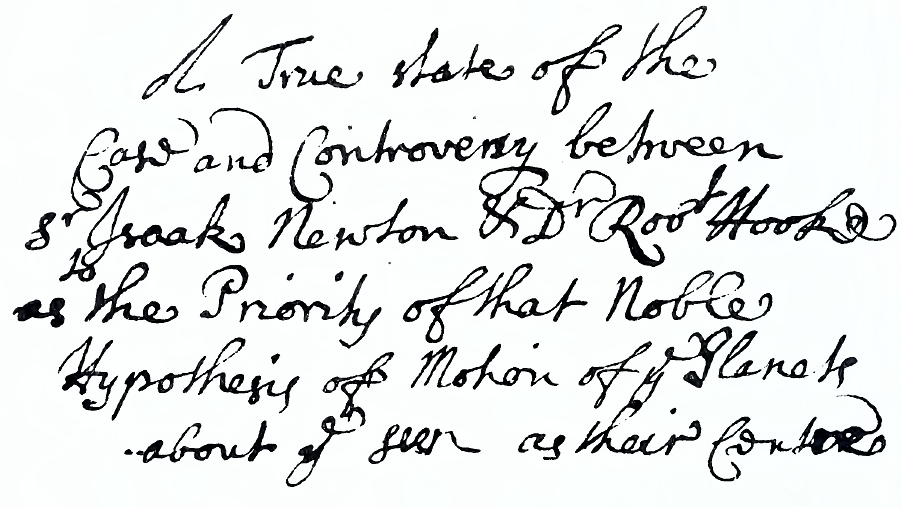
It seems that despite all the efforts there have been to change the prevalent view of the origins of celestial mechanics, they have not been entirely effective. The Wikipedia content is based on numerous sources, but in the most significant cases these sources do not actually substantiate the content. The vigorous and widely read assertion of Hooke's priority by Gribbin and Gribbin has been contested by a distinguished historian of seventeenth century mechanics 9 Michael Nauenberg, Review of: Out of the Shadow of a Giant: Hooke, Halley & the Birth of Science, American Journal of Physics 86, 79 (2018); DOI: 10.1119/1.5012509 . The issue comes down to a detailed examination of the original evidence and sources. This is presented here.
A conclusion of the above essay on assessment is that
A view arises from the present study that might be more widely applicable. Science appears as technology carried out with greater depth. Thus technology is first to achieve a dim understanding, and science is first to achieve a full one. Chronologically and causally, technology gets there first, and drives discovery forwards. Technology has to make do and mend, until science clarifies and organises. These strands remain distinguishable even in the close integration of the modern era. This view retains the need to defend resources for science to go deep, but does not support the notion of science for its own sake.
This view calls into question how physical science is presented, both to specialists and others. The laws of motion, for example, are learned right at the beginning of a physics course although historically they were not formulated until long after mechanical devices were being designed that were far too complex to be analysed by using them. Elementary science students are baffled and disheartened by the “laws first” textbook presentations and find it inimical to clear thinking and inspiration. It appears that the current syllabus is without pedagogical, conceptual or historical justification. It is still the common basis for the assessment of scientific value in historical studies.
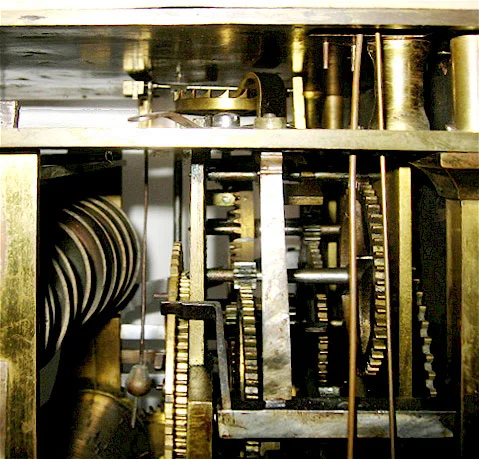
I pursued this view in another essay Early modern scientific and technical activities: sorting out “science” and “technology” which is available here. This includes a detailed study of the history of the development of mechanical clocks, and particularly the place of scientific work in it. According to the essay
This history, in which a centuries old conventional mechanism is revolutionised, by the advent of an early scientist who applied an advanced mathematical analysis to the problem, is considered a clear example of the distinctively different qualities of science and technology, and of the impact of science on technology.
The scientist in question was Christian Huygens, who calculated how to make it possible for the pendulum of a clock to keep the same time at large angles of swing as it does at small angles, and designed a device to achieve that aim.
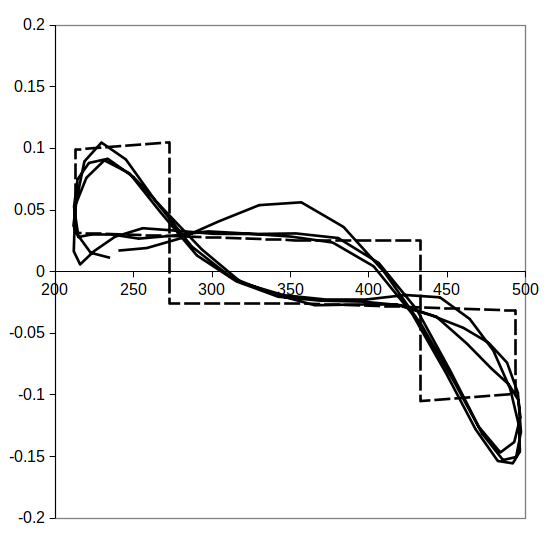
The detailed study reveals that the development of the pendulum clock was not aided by Huygens' mathematical advances, but was the product of technical innovation in a technical environment. Huygens device was not used in the pendulum clocks that were produced. Further, as far as the outcome of the mathematics was concerned:
It’s immediate effect on technical development seems to have been rather negative, in that it was accompanied by the erroneous removal from consideration of the drive in the analysis of timekeeping. This view has endured: the education of present day scientists and engineers conveys that the length of the pendulum determines timekeeping, and it is only specialist horologists who know otherwise.
It turned out that even the specialists had not quantified the effect of the drive on pendulum timekeeping and verified it experimentally. This led me to an investigation which is reported as Mechanics of the escapement driven pendulum in Horological Science Newsletter 4 Horological Science Newsletter 2007-4 p.2 . The results are also presented here. They show that, for the seventeenth century pendulum clock, the effect of a change in the drive is about ten times the effect of a change in the angle of swing of the pendulum.

All the above investigations into specific problems generated rather general statements about “science” and “technology”, how people learn about them and how they are presented publicly. These general statements call for more substantiation than is provided from looking at a few particular problems, however important they might be in their own right. This is provided in a set of web pages introduced here, which look at the nature of what we call science and technology, and how they are taught in four countries. The pages also look in detail at the history of perhaps the most important technical development in which the role of science is widely asserted: the advent of steam power.
2 The Common Sense Of Science, Penguin, 1960, Jacob Bronowski, Chapter 3 Isaac Newton's model, esp.p34-5
3 Robert Hooke - Tercentennial Studies (Aldershot: Ashgate, 2006)
5 Out of the Shadow of a Giant: Hooke, Halley & the Birth of Science. John Gribbin and Mary Gribbin. 318 pp. Yale U. P., New Haven, CT, 2017.
6 Robert D. Purrington, The First Professional Scientist: Robert Hooke and the Royal Society of London, Science Networks, Historical Studies, Volume 39 2009 page xiii
7 Stephen Inwood, The Man Who Knew Too Much: the strange inventive life of Robert Hooke, 1635-1703, Macmillan 2002, pages 293, 296, 297
8 Lisa Jardine The curious life of Robert Hooke : the man who measured London. London : HarperCollins, 2003, page 319
9 Michael Nauenberg, Review of: Out of the Shadow of a Giant: Hooke, Halley & the Birth of Science, American Journal of Physics 86, 79 (2018); DOI: 10.1119/1.5012509